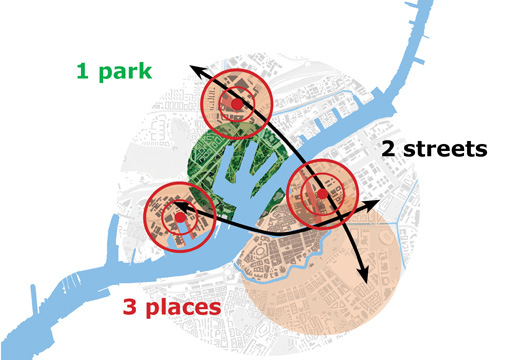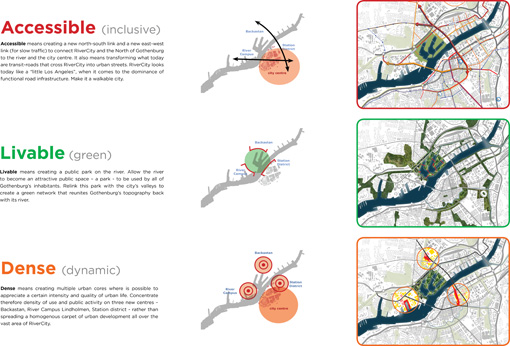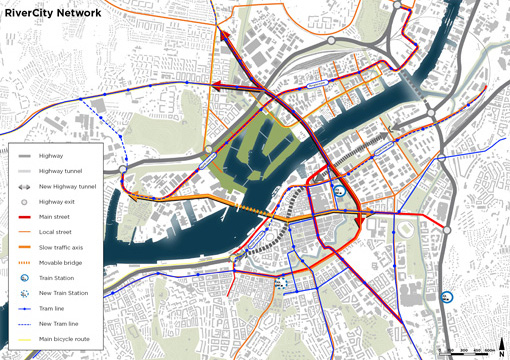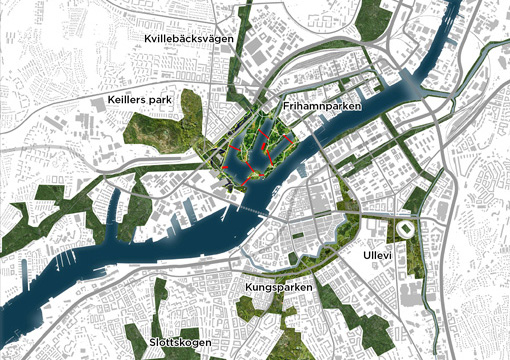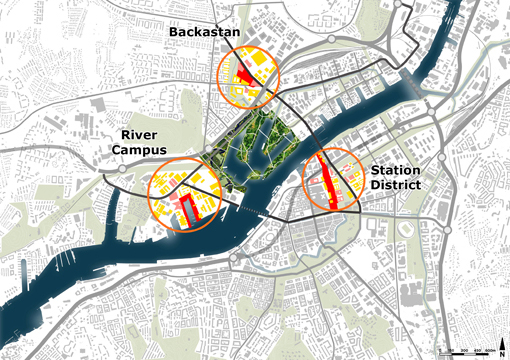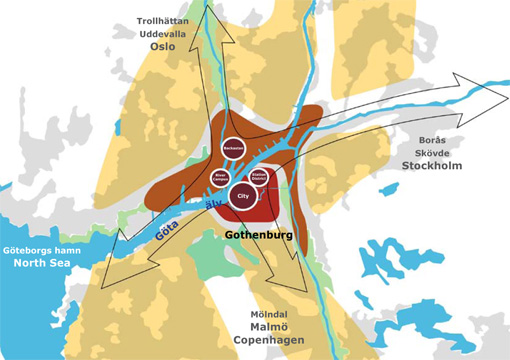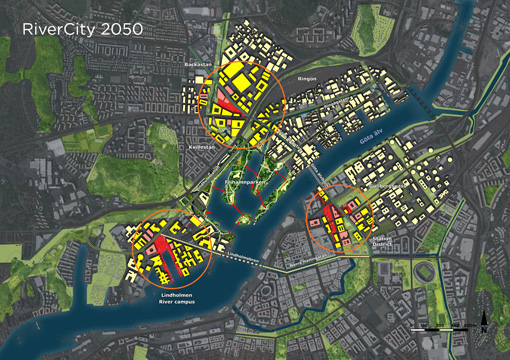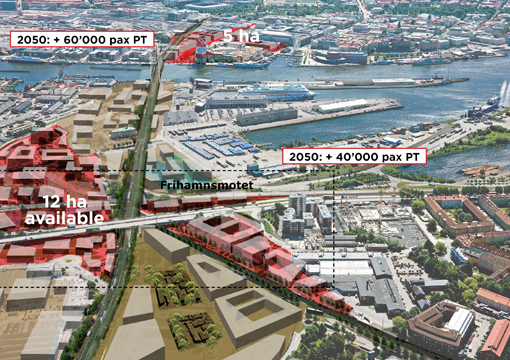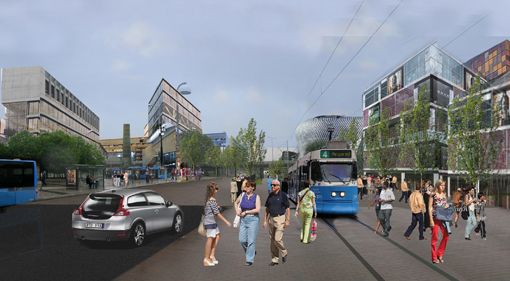team: Güller Güller architecture urbanism, Zus (Zones Urbaines Sensibles), Infras, Nüesch Development, LN Architects
Gothenburg will always remain a PortCity. And its relation with the port will be different than the one in Rotterdam, where the port was pushed out completely of the city, or that in Hamburg, where city and harbor are divided by the Elbe. In Gothenburg the harbor will stay present in the city. Some of the main road and rail arteries running to the harbor will remain and some harbor fragments are there to stay. Therefore, redefining the coexistence between harbor and city is a key issue of RiverCity.
At the same time RiverCity means, and that is inherent in the name of the project, that one opens up the city from the river. This implies that one redefines the way the city connects to the river and its riverbanks, which were occupied by the harbor before and cut off by the highway infrastructure. And that one opens up the river for the citizens of Gothenburg. It implies that the river is for everyone, not only for specific target groups, selective economic activities or monofunctional housing estates.
“Opening up the river” means making it accessible, livable and dense, making it inhabitable.
- Accessible by creating a new north-south avenue and a new east-west link to connect RiverCity across the river and with the North of Gothenburg. And by transforming transit-roads into urban streets. Make it a walkable city.
- Livable by creating a public park on the river at Frihamnen. Allow the river to become an attractive public space of Gothenburg for all of its inhabitants
- Dense by creating multiple urban cores where is possible to appreciate a certain intensity and quality of urban life - Backastan, River Campus Lindholmen, Central Station district.











